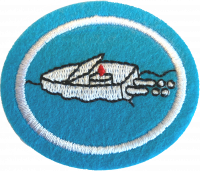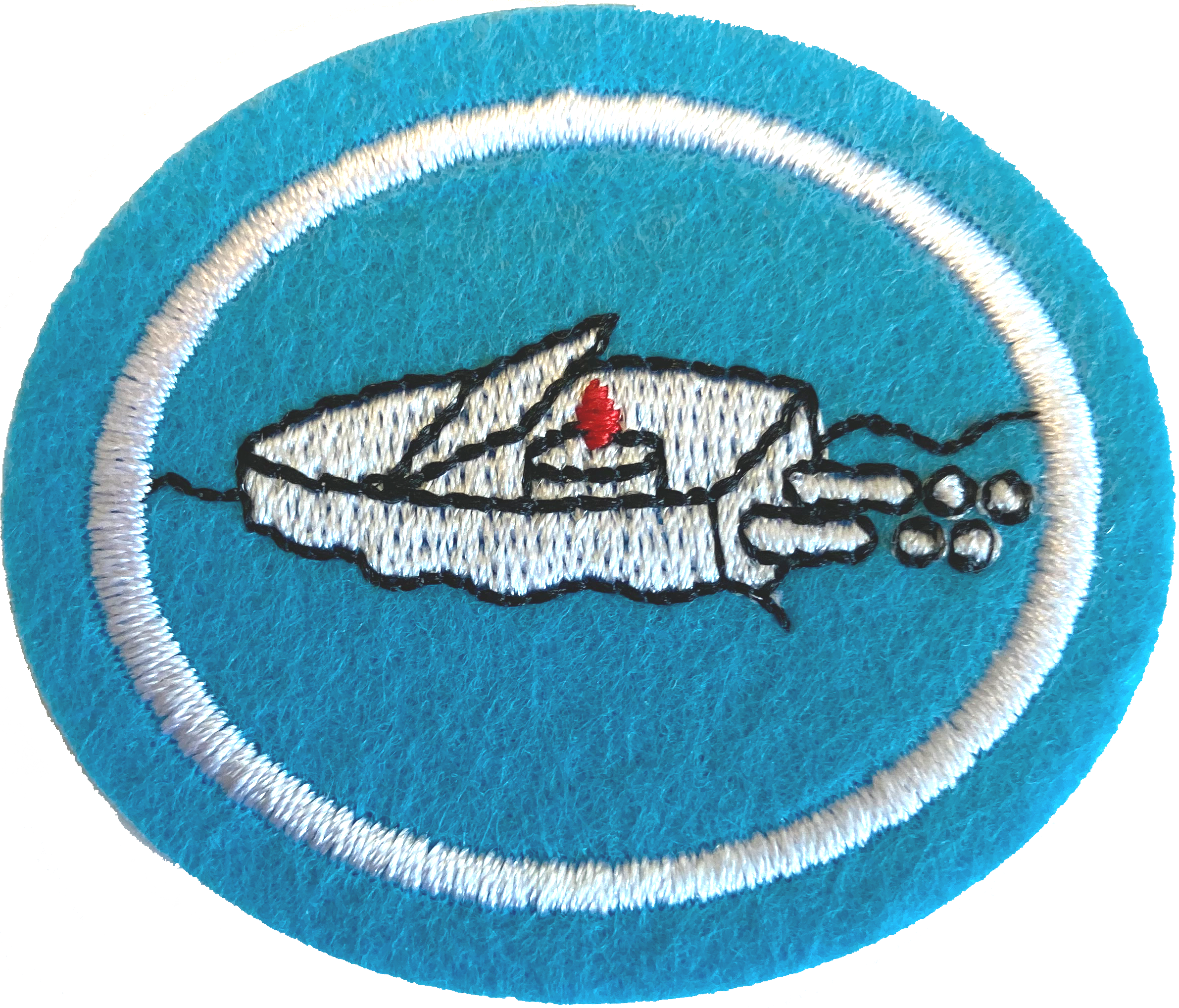AY Honor Toy Boat Regatta Answer Key
1
There are many websites that show the parts of a sailboat. Instructors should discuss that in toy boats, missing parts do affect movement such as: a missing keel may cause the sail to tip the boat over, or keep the boat from going straight; and a missing rudder would not allow the boat to be turned. One reference website is How Stuff Works - Sailboat
- Hull
- The outer shell of the boat.
- Mast
- The tall pole that rises vertically from the boat to support the sails.
- Boom
- A horizontal pole attached to the mast. It can swing 360 degrees around the mast.
- Mainsail
- The sail attached to the mast along its front edge, and to the boom along its bottom edge. Its angle can be changed to catch (or release) the wind by moving the boom.
- Jib
- A fixed sail at the front of the boat attached to the mast by its rear edge, and to the very front of the boat in its front corner.
- Keel
- A weighted structure on the underside of the boat that keeps the boat from flipping over when the wind acts on its sails. Without a keel, the boat would just tip over when the wind hit the sail.
- Rudder
- A paddle-like structure on the back of the boat that is used for turning the boat.
More terms:
- Deck
- The floor on the top side of the boat.
- Bow
- The front of the boat.
- Stern
- The back of the boat.
- Starboard
- The right side of the boat
- Port
- The left side of the boat. Large boats (and airplanes) dock on their port side.
- Fore
- Towards the bow of the boat.
- Aft
- Towards the stern of the boat.
- Tiller
- A control arm that can move the rudder.
- Cockpit
- A recessed area where the pilot sits to steer the boat.
2
These boats typically have a water paddle that is in some way connected to the hull with a rubber band. The paddle is wound which in turn winds the rubber band and motion is initiated when the paddle/rubber band is released. YouTube, Pinterest, and general searches on an internet web search will provide many videos and step-by-step instructions showing a multitude of designs.
3
An upward buoyant force that is exerted on a body immersed in a fluid, whether fully or partially submerged, is equal to the weight of the fluid that the body displaces. A boat will float if the weight of the boat and all of its cargo is less than the weight of water that it displaces (62.4 lbs/cf or 998 kg/m3)
Water expands over a thousand times when it becomes steam. One may place a zip-lock baggie in a microwave with a teaspoon of water and see the vapor expand the baggie.
You can find more information on Wikipedia about Archimedes’ Principle.
4
According to Newton's first law of motion, an object (boat) at rest will remain at rest unless acted on by an unbalanced force (wind, rubber bands, pushing, waves, paddles, etc.). An object in motion continues in motion with the same speed and in the same direction unless acted upon by an unbalanced force (opposing wind, friction of water, shore line, etc.).
5
According to Newton's third law of motion, every action has an equal and opposite reaction. The wind imposes a force on a sail and the boat will move when the force can overcome the resistance from the boat in the water. The larger the area of the sail, the more wind "force" is collected to overcome the boat resistance. The lighter the boat, the less force needed to overcome resistance.
6
The rubber band contains the energy. When the rubber band is wound up, the energy is stored energy = potential energy. When the rubber band unwinds it is releasing energy by moving = kinetic energy.
7
YouTube, Pinterest, and general searches on an internet web search will provide many videos and step-by-step instructions showing a multitude of designs.
8
Two or more "tracks" may be made with 6-inch house aluminum guttering, sealing the ends, and filling with water. At the start, participants are to use same size straws to blow on sails and the first boat to the end is the winner. Winners from each heat are then paired together until a final winner is determined for the group.
9
Two or more "tracks" may be made with 6-inch house aluminum guttering, sealing the ends, and filling with water (may be the same tracks as used for the wind boat race). The participants are to place a wound-up boat in the water and released at the start of the race. The first boat to the end is the winner. Winners from each heat are then paired together until a final winner is determined for the group.
10
- Noah's Ark: Genesis 7
- Baby Moses in the Nile: Exodus 1
- Jonah's sea voyage: Jonah 1
- Paul's shipwreck: Acts 27
- Defy buoyancy: Jesus walking on water -- Matthew 14, Mark 4, and John 6
- Defy buoyancy: Floating ax head -- 2 Kings 6


